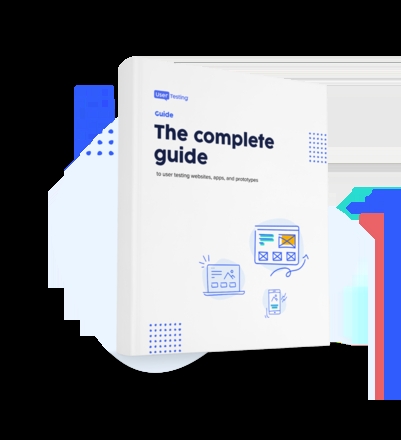
What are behavioral analytics, and how can you use them to improve CX?

Things aren’t going well: all metrics indicate your users aren't satisfied with your product or website. You have a couple of hunches about what could be done to improve the user experience, but these are just guesses. You don't have any evidence or hard data to support your ideas. This is where behavior analytics becomes a valuable tool for improving customer experiences.
What is behavioral analytics?
Behavioral analytics is collating and evaluating user data to understand how users behave when they engage with your product.
A great user behavioral analytics strategy will help you glean insights into:
- Any points of friction in the user journey
- Elements of your website that work well and elements users ignore or overlook
- The actions—or lack of actions—users take before exiting your site
- What users think about your product, both negative and positive sentiments
- The refinements and improvements you need to implement to boost the user experience
As you can see, while web analytics data gives you an overview of what users do, behavioral analytics helps you understand the all-important why, so you can take meaningful corrective action and create exceptional online experiences.
Why is behavioral analytics so important for UX?
Amazing user interfaces are never a happy accident. Pioneering companies understand that human insight leads to more confident, more effective design decisions, and behavioral analytics is one of the best ways to gather this data quickly and efficiently.
By building empathy with users and augmenting your product to better suit their needs and expectations, you'll unlock a range of business benefits: higher conversion rates, increased customer retention, enhanced customer satisfaction, more top and bottom-line growth—the list goes on.
To put this in context, McKinsey research shows that organizations that leverage behavioral insights outperform their peers by 85% in sales growth and 25% in gross margin. There’s much to be won by embracing this strategy for the user experience and your entire organization.
Behavioral analytics vs. business analytics
Behavioral analytics is often confused with business analytics, but the two are miles apart.
Business analytics is the process of analyzing historical data to improve business outcomes. It's an extremely broad term with tons of subsets, and behavioral analytics is one of them.
What makes behavioral analytics unique is the two technologies it combines: event tracking and user segmentation. User segmentation allows brands to define their audience and focus on valuable customers, gearing efforts to specific groups sharing similar characteristics.
By matching user personas to actions, behavioral analytics creates an in-depth story of the user journey, highlighting obstacles and pain points you must address.
Types of user data
Behavioral analytics data can be grouped into two overarching categories: qualitative insights and quantitative insights.
Quantitative data is numerical in nature. It tells us "what" users do statistically. By contrast, qualitative data focuses on user observations, opinions, and feelings. It tells us why users behave how they do, the story behind their actions.
For behavioral analytics to bring real value to your team, you'll want to combine both quantitative and qualitative research methods. That's how you'll understand what your users need.
Examples of tracked user behavior
So, to put behavioral analytics into action, you'll want to gather both numerical data and attitudinal feedback. With that in mind, here's a look at the types of user behavioral data you'll want to analyze:
Clicks and taps
Monitoring where users click (for websites) and tap (for mobile apps) will help you understand:
- How users navigate across your solution compared to the user journey you've designed
- Uncover users' preferences, obstacles, and expectations, including usability issues and website bugs
- How to optimize your solution and call-to-action (CTA) buttons to enhance the online experience, boost engagement, and skyrocket conversions
Mouse movements and eye-tracking
Mouse movements demonstrate how users move their mouse as they interact with your website, while eye-tracking analyzes the location and duration of the user's gaze on website elements.
Monitoring these metrics will show you the following:
- What parts of your solution attract users' attention, and what they ignore
- The amount of time users spend on certain elements of your website
- The designs that capture users' attention in the right way, which you can then replicate across your product pages
Scrolling
Scrolling helps determine if users reach pivotal moments in your ideal user journey. For example, imagine you've put an important CTA button at the bottom of one of your product pages, but Google Analytics data shows this page has a high bounce rate.
Researching user scrolling will show you whether users scroll down to your CTA button, or if they lose interest beforehand.
Combining scrolling with mouse movements and clicks creates a powerful play-by-play of how users interact with your web pages, which you can use to refine and improve your product.
User observation data
Of course, sometimes you want to examine the highs and lows of the user journey from start to finish. To do that, you'll want to focus on user observation data.
Through tests like user interviews and usability tests, you can record users as they complete an online task you've set, gathering rich insights about their behaviors, thoughts, and opinions, including any usability issues, areas of confusion, and opportunities for improvement.
Types of behavioral analyses
Now that you know the kinds of user data you need for behavioral analytics, the next question is how to gather these insights. Here are the best research methodologies to keep in mind:
A/B testing
A/B testing enables you to compare the performance of your solution by pitching a control - type A - against a test variant - type B.
In the test, you'll split your inbound traffic equally between types A and B, while capturing data about each group's interactions based on specific goals. At the end of the test, you'll have rich insights about which version of your product is more appealing.
A/B testing works wonders for testing new features or design changes without any risk, enabling you to make successful changes that you know users will love.
Click tests and heatmaps
Click tests are a speedy and straightforward way to gather behavioral data. These tests show users a static image of a website or app page and ask participants questions like: "where would you click to navigate to another page?"
The users' clicks, scrolls, and mouse movements are then extrapolated to create visual heatmaps, showing the parts of your page that participants focused on most.
Usability tests
In a usability test, you observe real users navigating your website or application. You ask participants to complete specific tasks and then review their actions, feedback, and behaviors.
The great thing about usability testing is that it's both qualitative and quantitative. With the right platform, you can gather numerical-based insights about the user journey while also collecting critical information about users’ thoughts and behaviors.
True intent studies
A true intent study is a quick, effective way to gather real-time feedback from your website's visitors.
With this type of survey, you intercept a user visiting your website and ask them a few open-ended questions about their experience, such as whether they accomplished what they wanted to do and faced any obstacles.
You can also add a couple of rating scale questions to your questionnaire to capture metrics like Net Promoter Score (NPS) and Customer Effort Score (CES).
User behavior analytics tools
To truly unlock the value of user behavior analytics, you're going to need the right tools for the job; tools that allow you to capture and analyze a wealth of user data quickly. Here's a summary of the most popular ones:
1. A/B testing tools
A/B testing tools are embedded directly into your website or application so you can run your test with real users swiftly and effectively. There are many tools out there, each with pros and cons.
The main thing to watch out for is A/B testing tools that exist in a silo. They make it difficult for you to combine your A/B test results with other qualitative UX insights. Remember, you want to understand both how and why your users behave the way they do, and A/B testing, on its own, only covers the first aspect.
2. Usability testing tools
Usability testing tools are digital solutions that make remote usability testing a walk in the park. Best-in-breed tools will support you throughout the entire usability testing process: automating recruitment, analyzing participant data in real time and producing visual reports on your behalf.
Not all usability testing products are created equally. Look for solutions that enable you to conduct both moderated and unmoderated research, and also make your job easier.
Our platform, for example, harnesses the power of data analytics and automation to record user sessions autonomously, generate accurate transcripts, collate results and create visual reports for you - all at the click of a button.
3. Heatmap tools
Heatmap tools create a visual picture of the elements that your users click on, or look at, from most to least, depicted by color intensity. Hot areas, portrayed in bright red, indicate a lot of users have clicked on a particular area of your page, while cold areas, shown in blue, are less popular.
A great heatmapping tool will give you a clean, intuitive understanding of how users interact with your product. However, heatmaps alone are purely quantitative.
To truly get into the minds of your users, look for a tool that allows you to perform mixed-method research, combining quantitative studies like click tests and heatmaps with qualitative methods like interviews and surveys.
4. Live intercept tools
Live intercept tools are the machine behind true intent studies. To implement one on your website, you’ll need to work with a specialist provider that helps you build your study, test its look and feel, and provides you with a Javascript code to embed the survey onto your web page.
Unleash the power of behavioral analytics in your organization
Instead of opting for an assortment of disconnected UX tools, why not go for a holistic solution instead?
The UserTesting Human Insight Platform is your end-to-end tool for UX research, empowering you to conduct usability tests, A/B tests, click tests, and much more from one unified and intuitive platform.

Get started with experience research
Everything you need to know to effectively plan, conduct, and analyze remote experience research.





